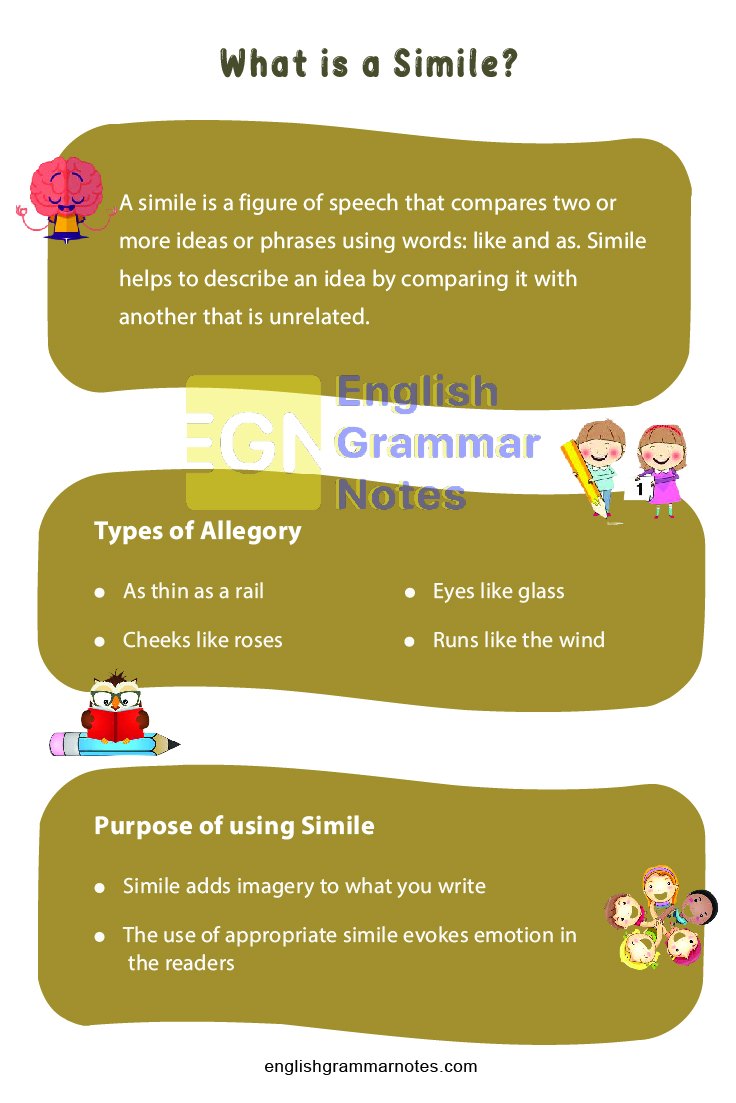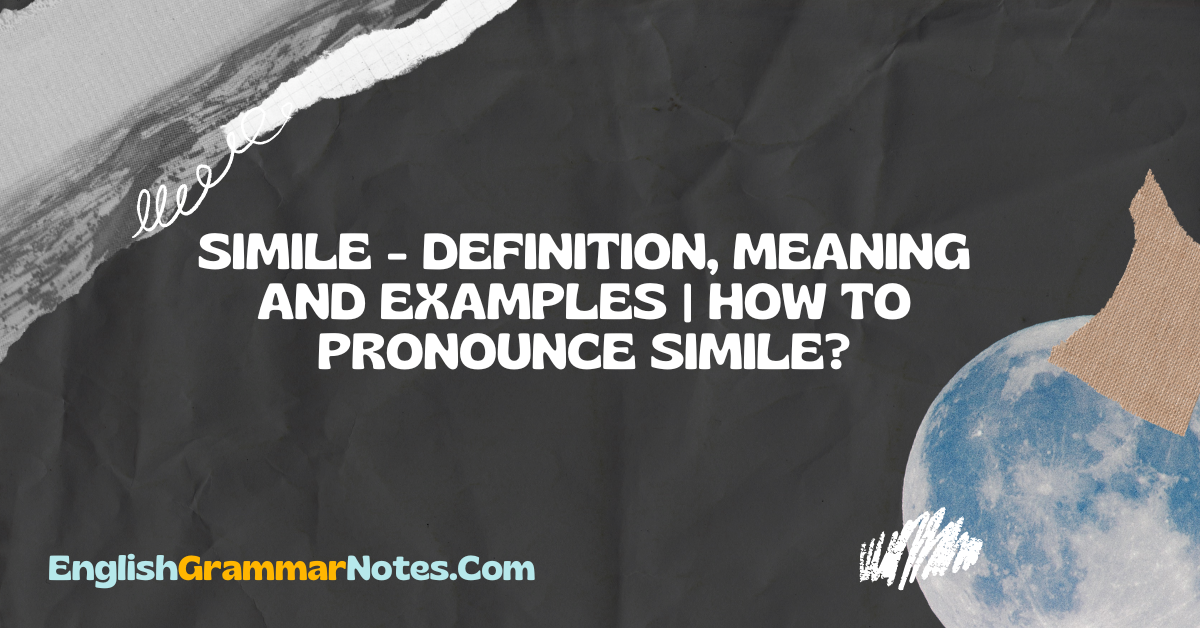A simile is one of the most commonly used figures of speech. Similes can be found just everywhere including songs, poems, prose, etc. The word simile has its roots in the Latin word similis, and implies the meaning ” like”. Simile is used as a literary device to make writing more vivid and unique. This article provides you with an overview of the figure of speech simile and includes its definition, examples, significance, etc.
- What is a Simile?
- Simile Examples
- Similes used in Writing
- Purpose of using Simile
- How to Write a Simile?
- Simile Vs Metaphor
- What is a Simile?
- Give examples of Simile?
- Distinguish between a simile and a metaphor?
What is a Simile? | Simile Definition and Examples
A simile is a figure of speech that compares two or more ideas or phrases using words: like and as. Simile helps to describe an idea by comparing it with another that is unrelated.
Simile Examples
Simile is a figure of speech that can be found in everyday conversations. Many commonly used expressions can be traced back to similes. Given below is a list of such commonly used similes:
- As innocent as a dove
- As thin as a rail.
- Cheeks like roses
- Flat as a pancake
- Eyes like glass
- Sweet as sugar
- Dull as a doorknob
- Bright as the sun
- Grows like a weed
- Has a voice like a foghorn
- Runs like the wind
- Climbs like a monkey
- Rain fell like teardrops
- Love is like a rose
- As cute as a kitten
- As happy as a clam
- As bold as brass
- As bright as a button
- As shiny as a new pin
- As common as dirt
- As big as a house
- As hot as hell
- As tough as nails
- As white as a ghost
- As sweet as sugar
- Swims like a dolphin
Similes used in Writing
Similes are often employed in creative writing as a means of creating imagery. Given below are some examples:
- Viewing the scene was like watching grass grow.
- That was as simple as shooting fish in a barrel.
- This contract is as solid as quicksand.
- She is as nutty as a fruitcake.
- You were as brave as a lion.
- They fought like cats and dogs.
- She is funny as a barrel of monkeys.
- This place is as tidy as a whistle.
- He is as strong as an ox.
- Your explanation is as clear as mud.
Purpose of using Simile
The use of simile can be beneficial to you in different ways:
- Simile adds imagery to what you write.
- The use of appropriate simile evokes emotion in the readers.

See More:
How to Write a Simile?
This is how a good simile should be
- Simple and clear: Try to make strong similes using ordinary everyday speech.
- Make a visually appealing simile: A simile should paint vivid imagery in the minds of the readers. Hence make it visually appealing.
- Original: Avoid using similes that have been repeatedly used in the past.
Simile Vs Metaphor
Simile and Metaphor are both figures of speech. However, they are different. Simile can be considered as a type of metaphor as it is involved in the comparison. Simile has specific attributes that make it different from a metaphor:
- A simile uses like or as to compare ideas.
- A simile is more obvious than a metaphor. That is they can be easily identified, as a simile contains the words like or as.
FAQs on Simile
A simile is a figure of speech that compares two or more ideas or phrases using words: like and as. Simile helps to describe an idea by comparing it with another that is unrelated.
Some examples of simile include:
- Bright as the sun
- Grows like a weed
- Has a voice like a foghorn
- Runs like the wind
- Climbs like a monkey
- Rain fell like teardrops
- Love is like a rose
3. Distinguish between a simile and a metaphor?
A simile uses like or as to compare ideas. A simile is more obvious than a metaphor. That is they can be easily identified, as a simile contains the words like or as.
Conclusion
Similes are powerful tools that can be used to compare two or more ideas. The use of similes will evoke images in the minds of the readers. This will in turn make sure that the readers stay glued to what you write or speak. On the whole, similes make use of comparison to connect very different things, thereby creating strong feelings and images. However, it is best to avoid similes in formal writing.
